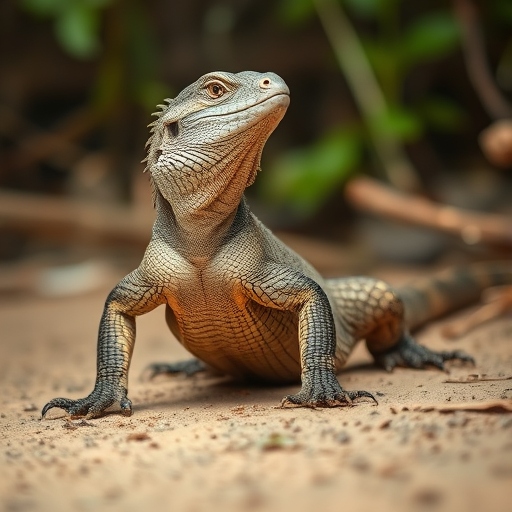Because of their size and intelligence, monitor lizards are fascinating creatures.
For these exotic pets to flourish in captivity, proper care is necessary.
This tutorial provides crucial advice on how to take care of your monitor lizard so that your scaly friend can live a long and healthy life.
Legal Aspects of Owning a Monitor Lizard
Understanding the legal ramifications is essential before taking a monitor lizard home:
Local Laws: Certain species, like the Nile Monitor, are prohibited from being owned by several states.
Endangered Species: Under the Endangered Species Act, some species can need specific permissions.
Awareness of Invasive Species: Keep in mind that lizards might upset regional ecosystems if they are released; exercise caution and knowledge.
An Overview of Monitor Lizards
The Varanidae family, which includes monitor lizards, is distributed all across the world, including the United States.
Among the popular species are: Water Monitor Argus Monitor Savannah Monitor Black-Throat Monitor
Every species has distinct traits and needs different types of care. Comprehending these is essential for effective ownership.
Establishing the Perfect Environment for Monitor Lizards
For your monitor lizard to thrive, you must set up an appropriate home. Think about the following:
Size of the Enclosure: Smaller species: 4×8 feet, such as the Savannah Monitor
Larger species: 10×10 feet or more (Water Monitor, for example).
Required Temperature:
Place to Bask: 100–120°F
75–85°F is the cool side.
To keep these temperatures, use ceramic heat emitters and heat lamps.
Humidity Levels: 50–80% humidity is required for species such as the Water Monitor.
Regularly spray and use a humidity gauge.
Options for Substrates:
Dry habitats: coconut fibre, sand, and cypress mulch
Humid habitats: Soil and sphagnum moss mix
Frequent Veterinary Care and Health Monitoring
Although monitor lizards are typically resilient, they nevertheless need regular examinations:
Weight monitoring: To maintain general health, weigh yourself on a regular basis.
Indices of Illness: Keep an eye out for respiratory problems, irregular shedding, appetite loss, or lethargy.
Vet Visits: Arrange for yearly examinations with a veterinarian who is knowledgeable in reptiles.
Diet and Nutrition for Monitor Lizards
For your monitor lizard to be healthy, you must provide it a balanced diet:
Regarding Carnivorous Animals (like the Savannah Monitor):
Rodents (rats, mice)
Fish Insects (roaches, crickets)
Eggs (sometimes)
For animals that are omnivores, like the Black-Throat Monitor:
Vegetables (squash, leafy greens)
Fruits (bananas, apples)
Meat (small vertebrates, insects)
Supplements: The healthiest foods for bones that contain calcium and vitamin D3.
Managing and Interacting Keep an eye on lizards
Monitor lizards can bond with owners but require careful handling:
Introduce Slowly: Allow your monitor to get used to your presence before handling.
Handling Techniques:
Use gentle movements and support their body.
Avoid grabbing the tail to prevent discomfort.
Training Opportunities: Some species, like the Argus Monitor, can be trained to recognize their owners.
Typical Obstacles in the Care of Monitor Lizards
Even seasoned owners may encounter difficulties. Here are a few typical problems and fixes:
Stress management: Make hiding places available and refrain from overhandling.
Feeding Challenges: Try changing your lizard’s diet and inspecting the surroundings if they refuse to eat.
Problems with Shedding: Rough surfaces and increased humidity will aid in shedding.
Cleaning and Upkeep of Habitats
Keeping your monitor lizard’s surroundings clean is essential to its wellbeing:
Daily Spot Cleaning: Get rid of trash and food scraps.
Deep Cleaning: Change the substrate and sanitise the surfaces every one to two weeks.
Water Bowl Maintenance: Ensure the water bowl is large enough for soaking, especially for species like the Water Monitor.
Conclusion: Effective Care for Monitor Lizards
In the USA, maintaining a monitor lizard may be both gratifying and challenging.
You can guarantee a satisfying encounter by being aware of their habitat, food, and medical requirements.
Be sure to research the specific requirements of your monitor lizard species to provide the best care possible.
With the right attention, monitor lizards can be unique and engaging companions for years.
